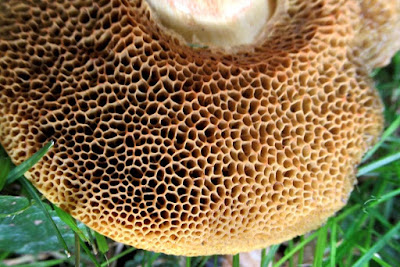There seem to be toadstools popping up everywhere at the moment - in the lawn, in the flowerbeds and in the woods. Andy M has taken a few pictures, and hazarded a guess at identifying some of them - suggestions welcome !
Sprouting en masse from an old tree stump on Granta Park.
Cap about 1cm across. (Coprinus disseninatus)
Growing in the lawn at home - cap about 3-4cm across.
Gills white and well spaced. Stipe streaked pink. (Hebeloma spp?)
Hard and scaly, eventually splitting to release black spore-mass inside.
Growing in the soil, about 4-5cm across. Common Earthball (Scleroderma aurantium)
Crazed, reddish-brown cap and red stipe, about 7-8cm across, with characteristic
tube-shaped 'gills'. Growing on woodland edge at home. (Boletus pulverulentus)
Large fleshy cap with brownish scales and splitting edges
- around 12cm across. Pinkish-white gills and chunky white stipe.
In the mown grass on Granta Park. (???)

















































